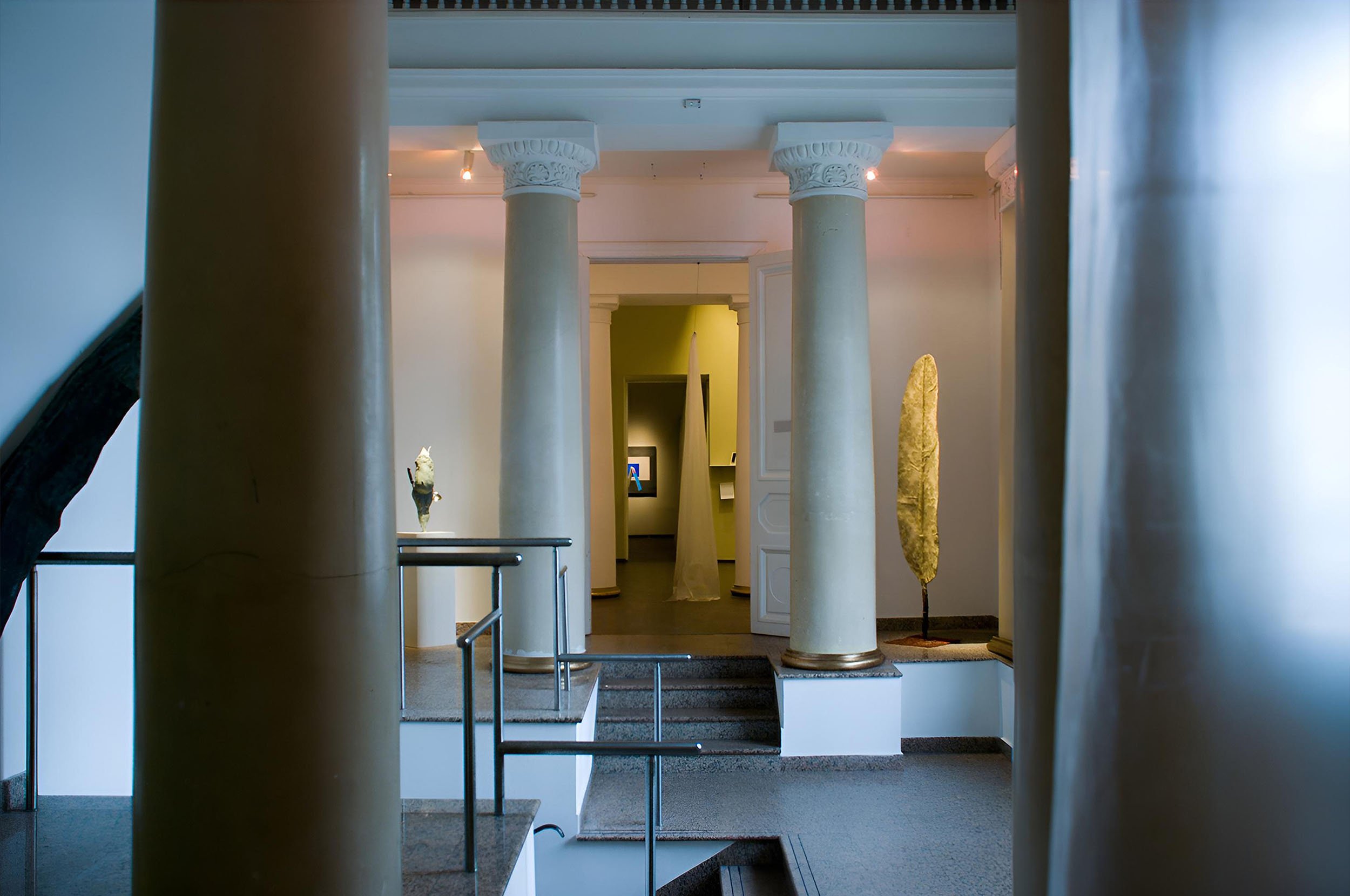
Detective
17 june – 21 september 2014
Moscow Museum of Modern Art, Moscow, Russia
Detective
17 june – 21 september 2014
Moscow Museum of Modern Art, Moscow, Russia
curator:
Valentin Diaconov
architector:
Olga Treivas
Sergey Khachaturov, Lyubov Popova, Alexandra Sukhareva, Sergey Sapozhnikov, Eduard Krimmer, Sergey Nikitin, Yulia Ivashkina, Ilya Dolgov, Dmirty Shubin, AES+F, Valery Ayzenberg, Nikolay Alexeev, Sergey Lotsmanov, Natalia Zintsova, Alexander Povzner, Anna Titova, Ilya Orlov, Stas Shuripa, Arseny Zhilyaev, Maxim Spivakov, Valentin Tkach, Ustina Yakovleva, Natalia Turnova, Kriss Salmanis, Daria Irincheeva, Ivan Mikhailov, Sergey Ogurtsov, Michail Tolmachev, Anna Parkina, Kirill Makarov, Ivan Gorshkov, Kirill Gluschenko
artists:
Moscow Museum of Modern Art is proud to present «Detective», a show that is dedicated to interpreting works by contemporary Russian artists through structures and genre specifics of whodunits and crime literature. The main nucleus of the show is formed by pieces of young artists who have debuted in late 2000s — beginning of 2010s. These artists are surrounded by a system of historical references from other eras, namely the 1990s and even Cubist exeperiments by Russian artists of the early 20th Century.

view of the exhibition
2014
text by V. Diaconov:
Crime fiction became more and more widespread and popular as the infrastructure of modern cities turned increasingly labyrinthine. State institutions that enforced law evolved parallel to popular media's influence on all aspects of everyday life. «The classic crime story, as the term whodunit indicates, is a narrative about who someone is, whether someone is the sought-after murderer or an accessory, witness, avenger, or victim of a crime», writes Josef Hoffman in «Philosophy of Crime Fiction». «The point is not to be fooled by «what someone is», i.e. their social status as a doctor, teacher, minister, midwife, taxi driver etc». Urban dweller's fragmentation into several social agents (a parent, an employee, a football fan, a patient) is crime novel's nutrient medium: perpetrators of crimes are unmasked no matter what roles they pretend to play within the fabric of society. This unmasking can serve as an analogy to the process of interpreting intentions of an artist, who evades clear-cut discourse to immerse her- or himself in «reality», be it the physical surface of the canvas, a ready-made or a concept that turns an artwork into part of the viewer's internal intellectual experience.
«Detective» suggests a new perpective on the creative process of young artists. They are to be seen as producers of evidence and alibis. Search for meaning in individual works is possible because of an immersive attention to detail and circumstances of the work's appearence. All the artists in the show are interested, in varying degrees, in three main topics. Some of the work betrays a new variation of speaking in character, a staple of Moscow Conceptual School. In works by Ilya Kabakov, Victor Pivovarov and Vadim Zakharov the narrative is frequently set by aliases and fictional protagonists, and the viewer identifies either with these protagonists or with the authorial figure. Artists that are featured in «Detective» atomize authorship, giving a distinct role to social theory (Arseny Zhilyaev), processes of nature (Ilya Dolgov) or a museum structure where the viewer assumes the role of a curator (Anna Titova). Other artists are interested in «drone optics» - the latest military and law enforcement invention that impairs an «objective» view of reality, seen where no man has gone before. Still another group of the show's contributors, painters mostly, construct spaces that exist outside the concept of ownership and individuality. These spaces are a type of critique of notions of individual comfort in today's vast marketplace.
Works by young artists are complemented by two Cubist paintings by Lyubov Popova and Eduard Krimmer. These artworks lead us back to the beginnings of art striving to depict complex, fragmented optics of contemporary cities. A selection of work from late 1990s (Natalia Turnova, AES+F, Dmitry Shubin, Valery Aisenberg) connect with the show's nucleus either thematically or formally. Last but not least, «Detective» will introduce a number of fake late 19th Century Russian landscapes in the exhibition route. What for? The answer is near.

view of the exhibition
2014

view of the exhibition
2014

view of the exhibition
2014
